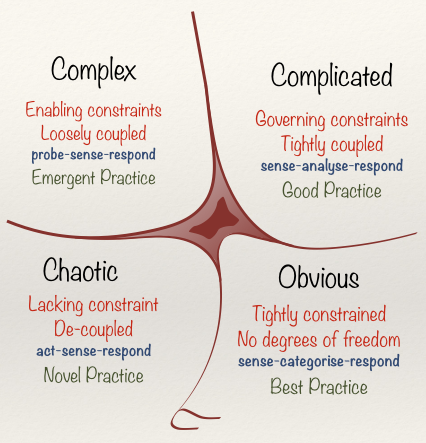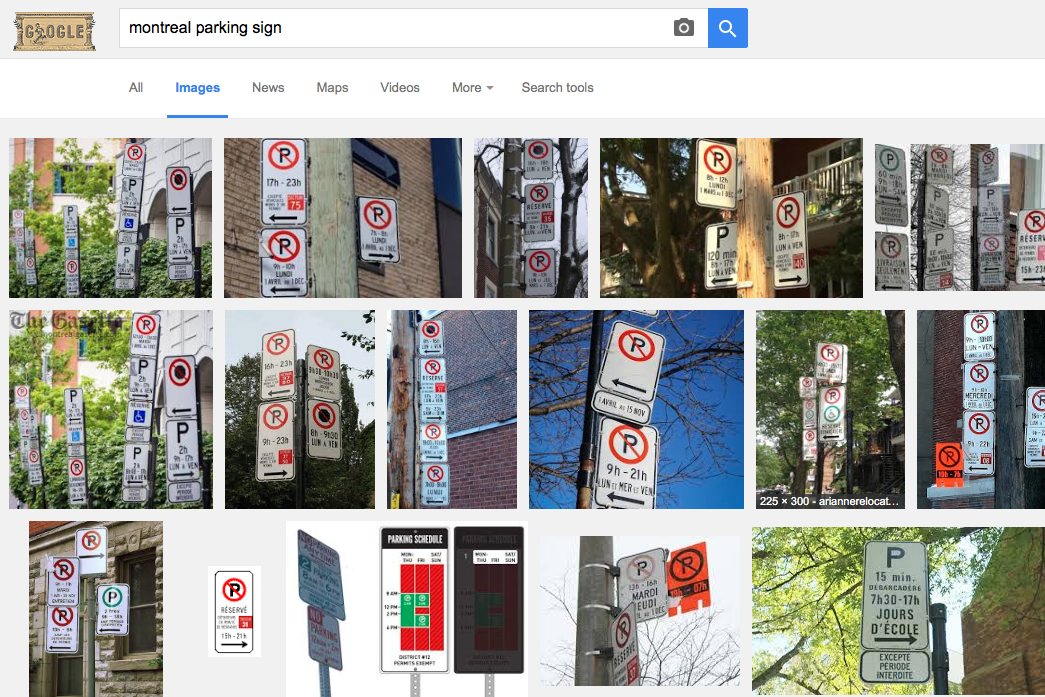Teams’ self-regulation: is it realistic?
Following my two posts on the subject of self-regulation, some doubts came to my mind.
The exercise is simple: ask each person in the audience to mentally (and visually) choose two people in the room, in silence.
People then stand up and must form an equilateral triangle, in silence, with these two people. This takes about 60 seconds.
My twisted mind then devised a diabolical variant of this exercise.
Rather than asking everyone to move freely, I formed teams, assigned a “leader” per team and gave instructions only to the “leaders”.
The exercise was interrupted after 4 minutes without the participants being able to form equilateral triangles.
Conclusion?
Leaders are barriers to performance? Perhaps.
Peter Drucker often said that the function of management seemed to be precisely to prevent people from working!
But is it realistic to think that teams could self-regulate?
Is there a limit to the number of people who may be involved in this process, let’s face it, a little chaotic?
We did the first tests with 30 then 45 people. No problem.
But we were outside. It was physically easy to get around.
I tried the experiment with a larger group. 70 people in a large room which contained fifteen large tables and chairs. Obstacles prevented participants from walking easily.
The same Machiavellian scenario: the leaders had first to try to fulfill the objective.
Almost 10 minutes passed when I interrupted the exercise … the goal was not reached.
And believe me, the lost look of the participants during these ten minutes made me pity them. Confusion, incomprehension, frustration, anger … after all, they are moved without even understanding what is happening. Nobody explained anything to them…
Hypothetical situation of course ….
Some leaders who did not understand the rules invented new ones.
Others simply decided for their “employees” with whom they would be in triangle !!! Forget the initial choice!
In doubt, no “leader” came back to ask me for explanations … it was a simulation, nothing to do with reality … of course.
In short, chaos!
The exercise was then repeated by asking everyone to simply form triangles … 45 seconds have passed and calm has returned, the goal accomplished.
Still full of doubts, I pushed the exercise even further by asking a slightly larger group to do the same in a rather restricted space. The same result. Less than 60 seconds.
Harold Jarche introduced this exercise at a meeting on intelligent organization in March 2015. He told me that he had achieved this with even larger groups!
I believe it.
Self-regulation works.
Unfortunately, I was given a powerful counter-example at a training conference in June 2015 when I met dozens of people involved in training and development from across the province, some of whom worked in the health system.
Quebec is experiencing major changes in health and education systems. The administrative burden associated with its complex departments became such that reorganization was necessary.
And the government in place in 2015 decided (minimal consultation, very minimal, with the concerned people) to strike a great blow!
The systems in place having too many organizational levels whose names escape me, the government and its super-ministers decided to create superstructures by merging the regions, boards, school boards already inflated and impotent, the result of previous mergers.
The logic is simple: if one imposes a centralized control of expenditure, (because you see the objective of the governments in place for several decades is no longer to deliver a service but to control a budget … pfff)
Act more uniformly everywhere and thus generate savings (of course, the business books and case histories studied in the Big Schools show only the opposite in the past thirty years, with mergers serving only short-term objectives … but what do they know?).
At the head of these super structures, an omnipotent minister who … decides.
A strange reminiscence of the Emperor Palpatine explodes in my mind. “Yes, yes, I promise to use this power very rarely and for a limited time. “
Real Case Study
Only the names were omitted to preserve the anonymity of the victims … ah, speakers…
A healthcare professional must purchase equipment suitable for a long-term patient.
The usual procedure (we think here in 1995, formerly, formerly, at the time … .brew an eternity) was as follows:
- Selection of material (spoon, cushion, special sheet, specialized equipment, etc.) depending on the need to be filled
- Call to trusted representative already used in the past and usually local or regional
- Confirmation of specifications
- Beginning of the transition to speed up transportation to the service center (hospital, CHSLD, Clinic, etc.)
- Express shipping occasionally
- Purchase order sent to the purchasing department
- Confirmed “official” order between the purchasing department and the supplier
- Receiving Equipment
Total time: a few days.
Results:
- Higher equipment unit cost of a few dollars
- Higher shipping cost for fast service
- Satisfied and comfortable patient
- Reduction of hospital stay or intensive care/emergency
- Quality product adapted to the specific use required by the situation
- Satisfied and Effective Intervener
- Increased productivity
- Decreased care required to compensate for discomfort or pain caused by delay
- Save time and resources to place order
- General fluidity of the service
- Quality of life of the patient
- New procedure required by the – reorganization
WARNING: the following is a simulation … I would dare to include the entire procedure, for lack of space or patience on your part …
OK, let’s go.
Procedure PR (post-reorganization):
- Selection of material (spoon, cushion, special sheet, specialized equipment, etc.) depending on the need to be filled
- Call to trusted representative already used in the past and usually local or regional
- Confirmation of specifications
- Beginning of the transition to accelerate transportation to the service center (hospital, CHSLD, Clinic, etc.)…Oh oh. This is only possible if the supplier is in the list of authorized suppliers
- Call to the purchasing department to confirm the list
- The supplier is no longer listed!
- Provincial Supplier selected by Provincial Strategic Purchasing
- Team Consultation of the new supplier’s material by the worker
- Discussion to find an equivalent to the original request, as the latter is not “permitted”
- Checking with purchasing department for approval of purchase order
- Purchase order number provided to new supplier
- Order confirmation…Oh, oh, the group discount does not apply to this “special” material
- The purchasing department changes the initial order to qualify for the rebate
- Confirmed “official” order between the purchasing department and the supplier
- Normal Shipping, Priority Shipping Service Not “Authorized”
- Receiving Equipment
- Equipment used by the nurse hired by an agency, more or less aware of the file, since she was called by the hospital at the last minute
- Bad material found by the initial speaker the following day
- Call to the supplier to clarify the situation
- Call to the purchasing department to explain the situation and require an exchange
- Confirmation that the order has been changed by the purchasing department and that everything is now “authorized”
- Trade is no longer “permitted” The patient must now be moved to a new chair, awaiting receipt of new equipment
- Planned meeting to justify the exchange and write an explanatory report
- General call for a consultative meeting with relevant stakeholders
- The guy of the purchases is not available before two weeks
- The patient had to go to the intensive care unit for the rest of the time
- The replacement of the buying guy has never heard of this order.
- The meeting should be postponed and the 10 invited guests should return to work.
- Ticket A34 is no longer in service
- Go to the second floor to receive the A37 blue ticket!
- Do not forget to sign the form in three copies.
- Do not forget to send an e-mail to everyone. And where is the speaker who fucked up all this mess?
Total time: a few weeks or months …
Results:
- Saving a few dollars on the price of the equipment … at least it was the forecast.
- Massive year-end savings and performance bonus for the purchasing department … according to the strategic plan.
- Unsatisfied and ineffective intervener or resigned
- Product not adapted to the specific use required by the situation, But … cheap!
- Increased administrative workload by stakeholder
- Decreased care …. Period. Anyway, the patient is going to die!
- Added bureaucratic heaviness
- Establishment of a permanent monitoring committee to avoid delays and cost overruns
- Hiring professional auditors
- Contract to an operational efficiency consultant to optimize the work of the teams and make substantial savings ….
- Substantial savings of the payroll generated by the departure of the team of professionals and not replaced by the organization … ah, these troublemakers ….
- Increased indirect costs by “occasional” hiring of agency staff.
- Ah yes, the patient died due to inadequate (and late) treatments of bed sores. Well, we must hurry to admit another one of urgency because our budgets depend on the number of beds occupied … .how does not there be anybody to welcome the patient? Ah, they all retired ….
Making triangles in a room seems a trivial exercise.
However, it is very complex when the group grows. This complexity can not be managed by imagining a series of complicated rules.
Dave Snowden’s Cynefin framework tells us that rules, procedures and bureaucracy in general are only useful for complicated situations, whereas complex situations require a different way of thinking, focusing on a clear vision, a goal to pursue, and NOT on the specific way to get there. And on a deep reflection of situations.

The exercise of triangles highlights a clear goal (making triangles), few rules (in silence), a huge potential for contact (n-1)! And a concept that is increasingly being used in our organizations and governments: unwavering faith and unshakable trust in staff.
I feel a convergence in recent years. I have the chance to see this outside of systems and organizations.
Today’s organizational systems are less and less able to deal with complex situations arising from the volatility, uncertainty, complexity and ambiguity that prevailed around us. I see it from the outside, but I am convinced that we all feel it from within our organizations as well.
A great fatalism takes hold of us at the dawn of the great reorganizations imagined by the top of the pyramid.
If only the base could build ….
If only the pyramid did not exist!
The exercise of triangles is only a metaphor, but in my opinion it represents the potential of our organizations.
The other metaphor that inspires me is the brain following a cerebral accident. The great plasticity of neurons and their multiple contacts. It is not yet clear why the brain can work, but we now understand that this plasticity, the potential to reconnect neurons in a different way allows the brain to recover lost functions and create new ones.
We all have that potential.
Our organizations all have that potential.
It’s up to us, all of us to use it.
Individually first.
And then collectively.
© Copyrighted material Aliter Concept™ 2017. Please do not print or copy without permission from the author.
BUT DO SHARE IT using the social network buttons !!




